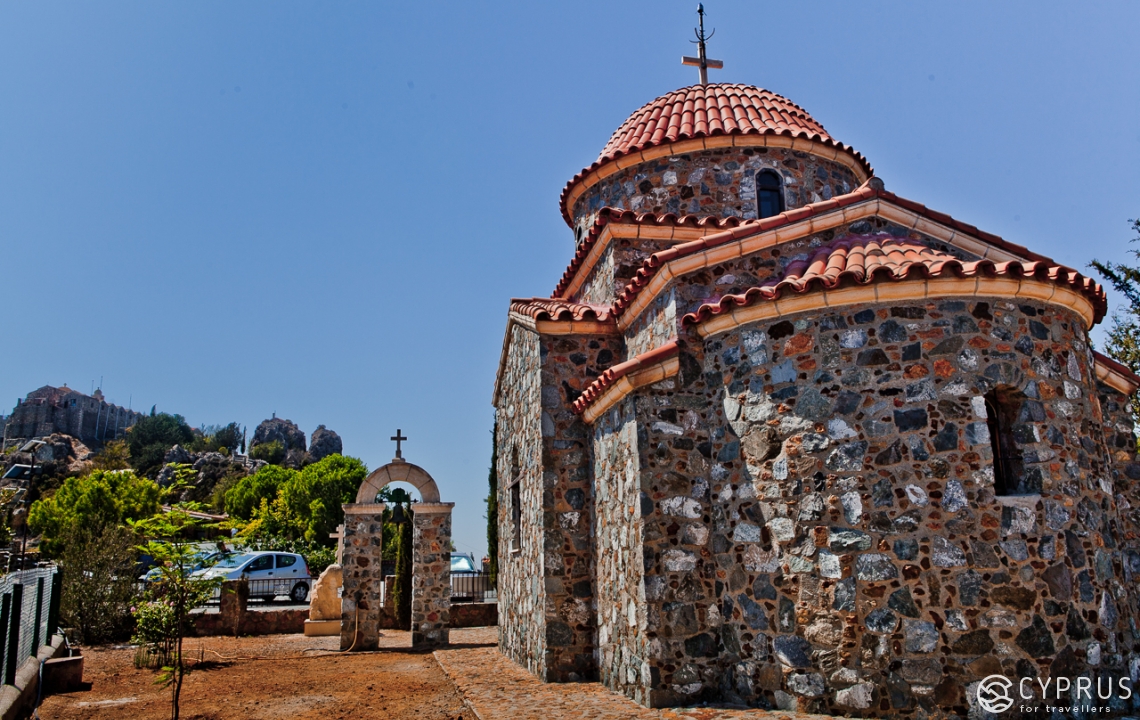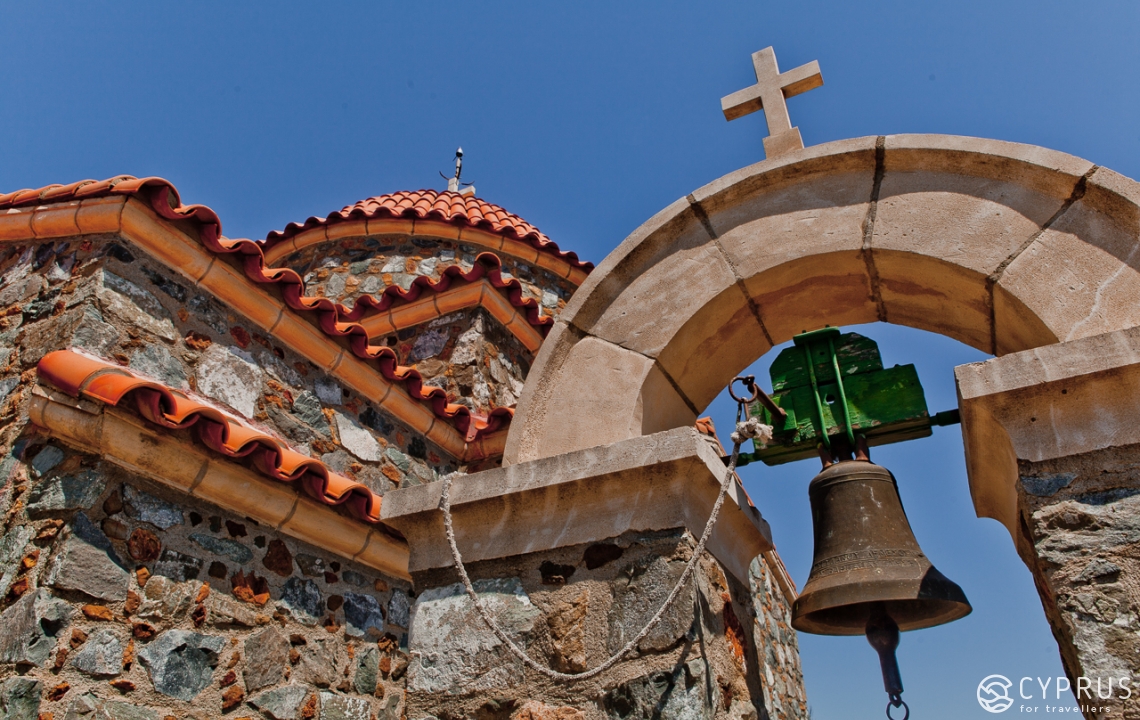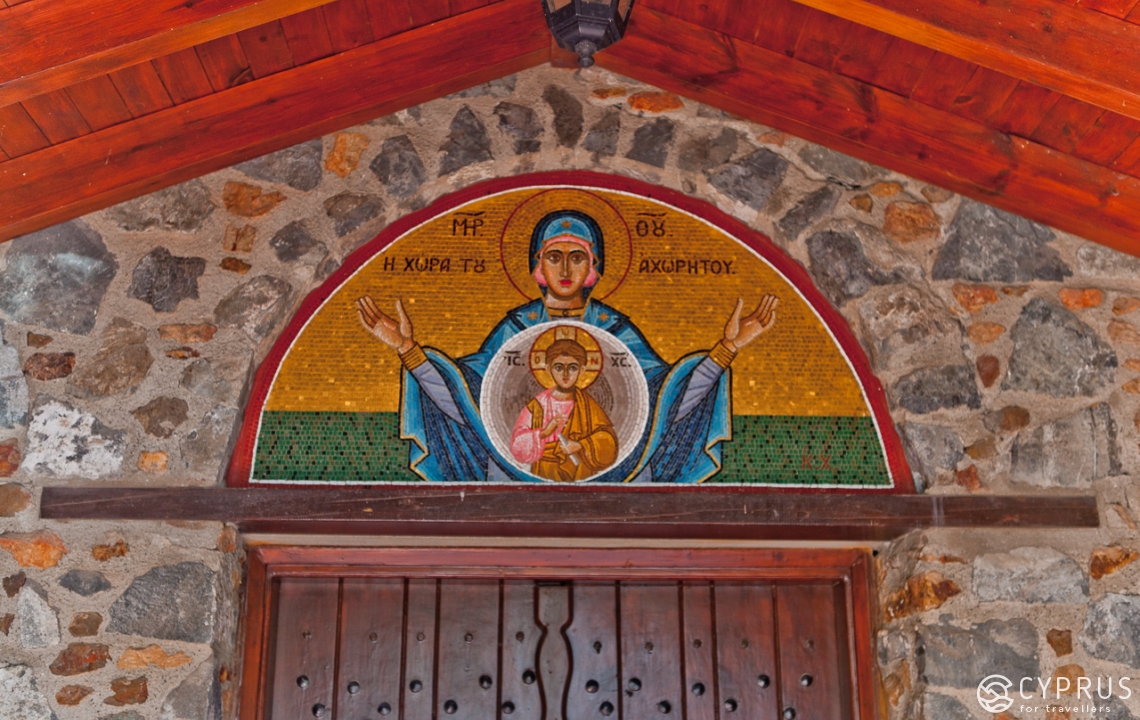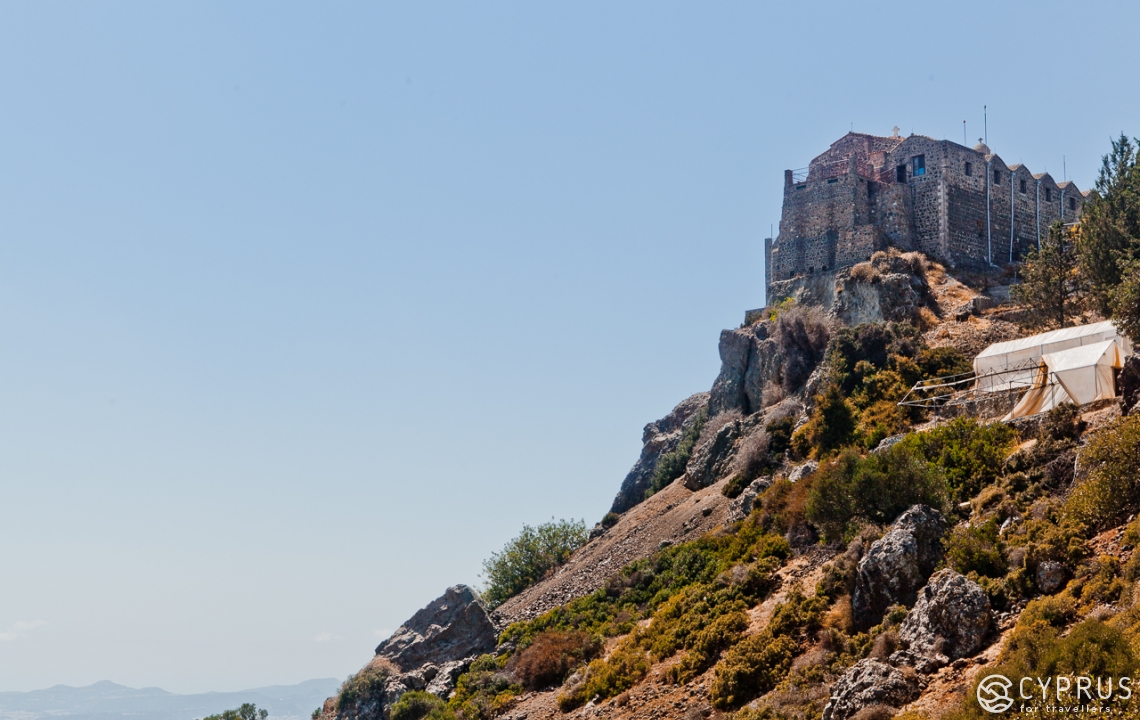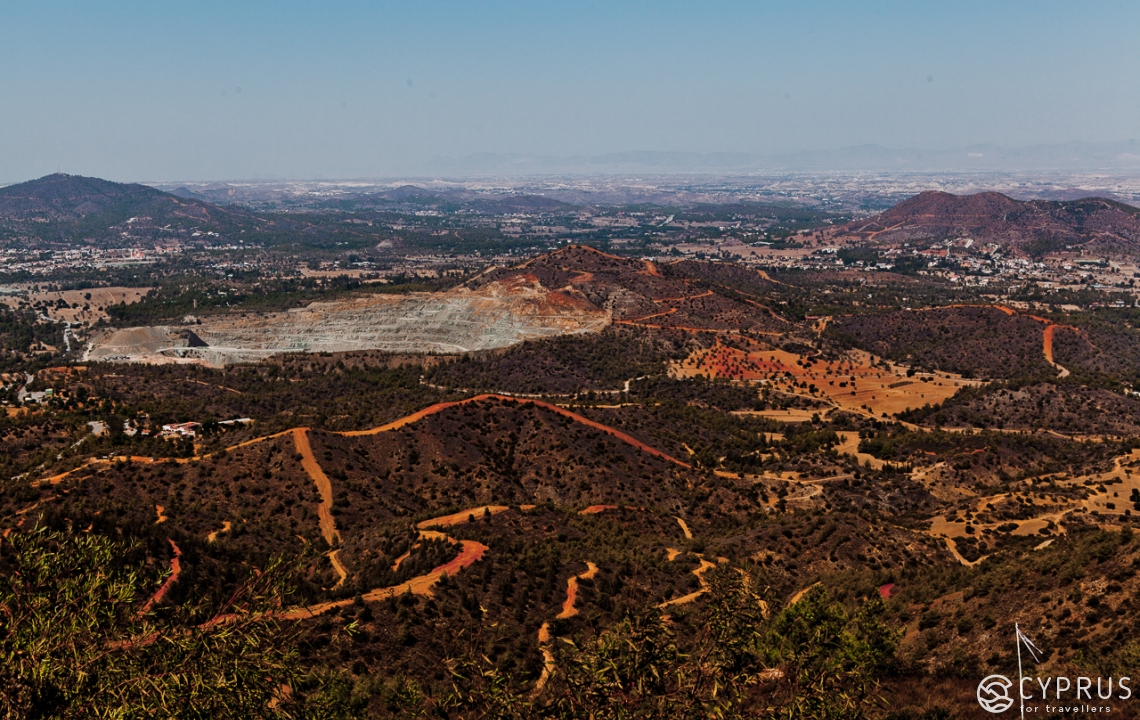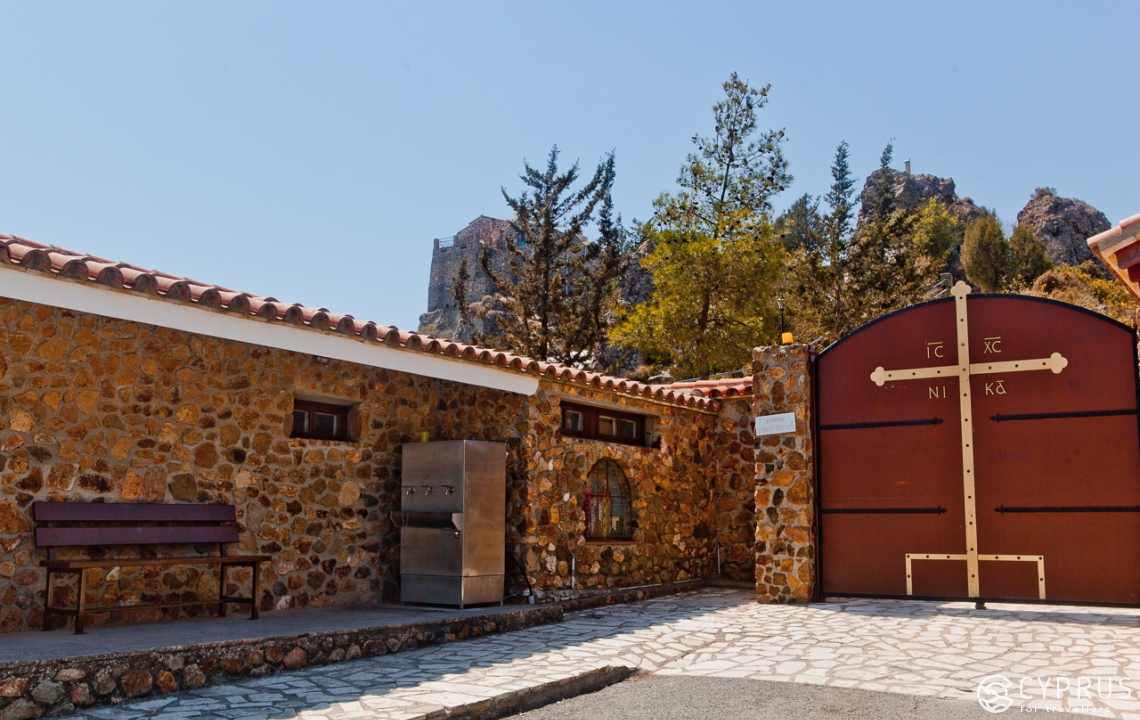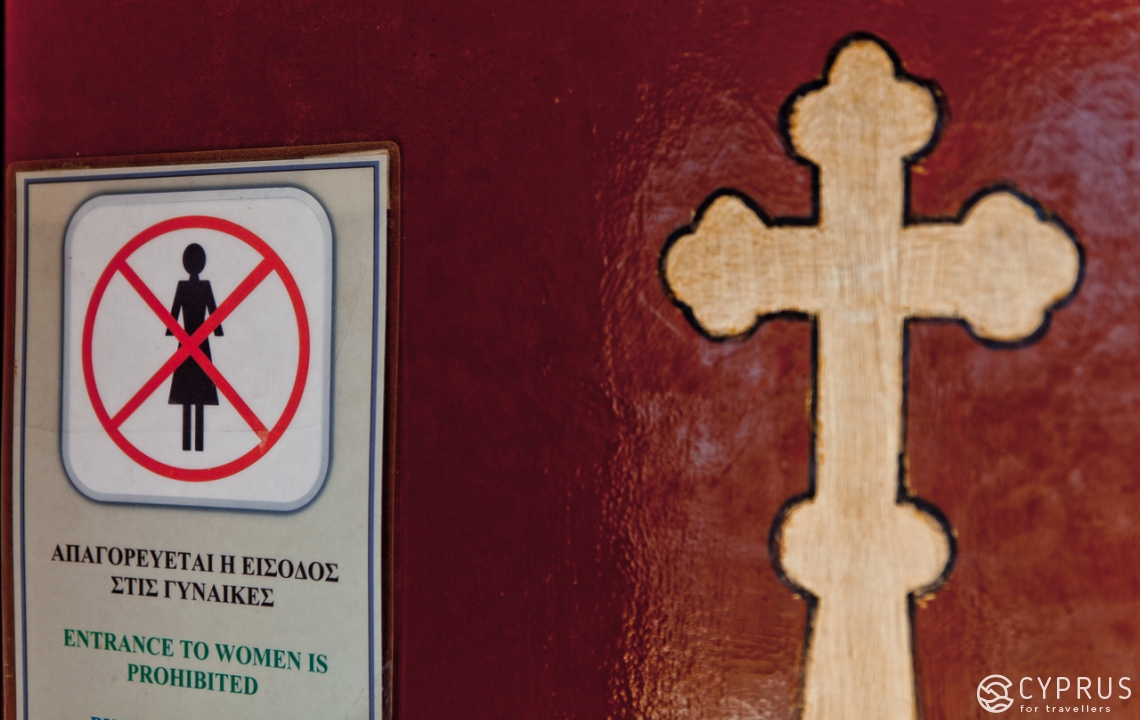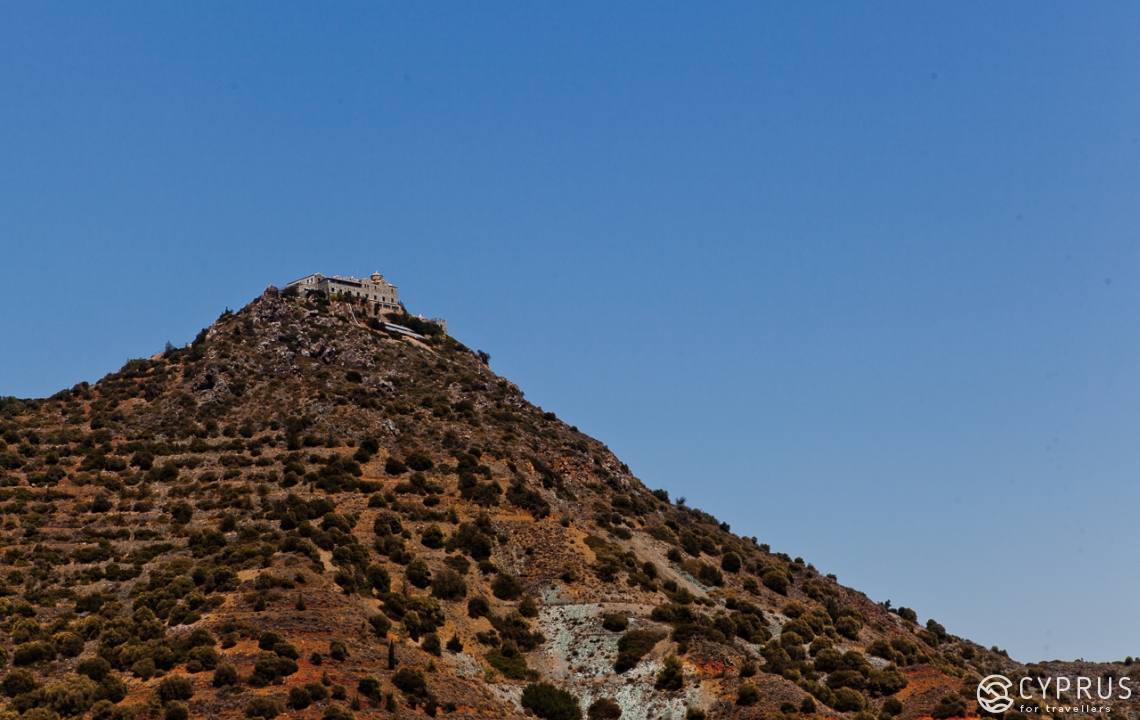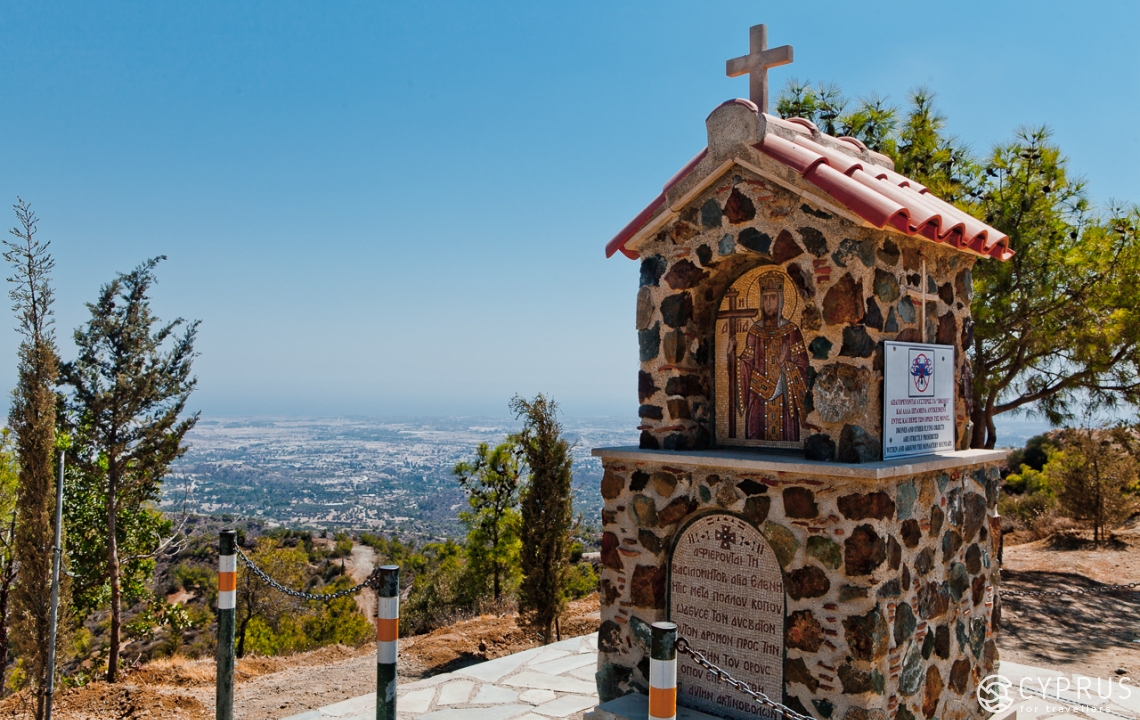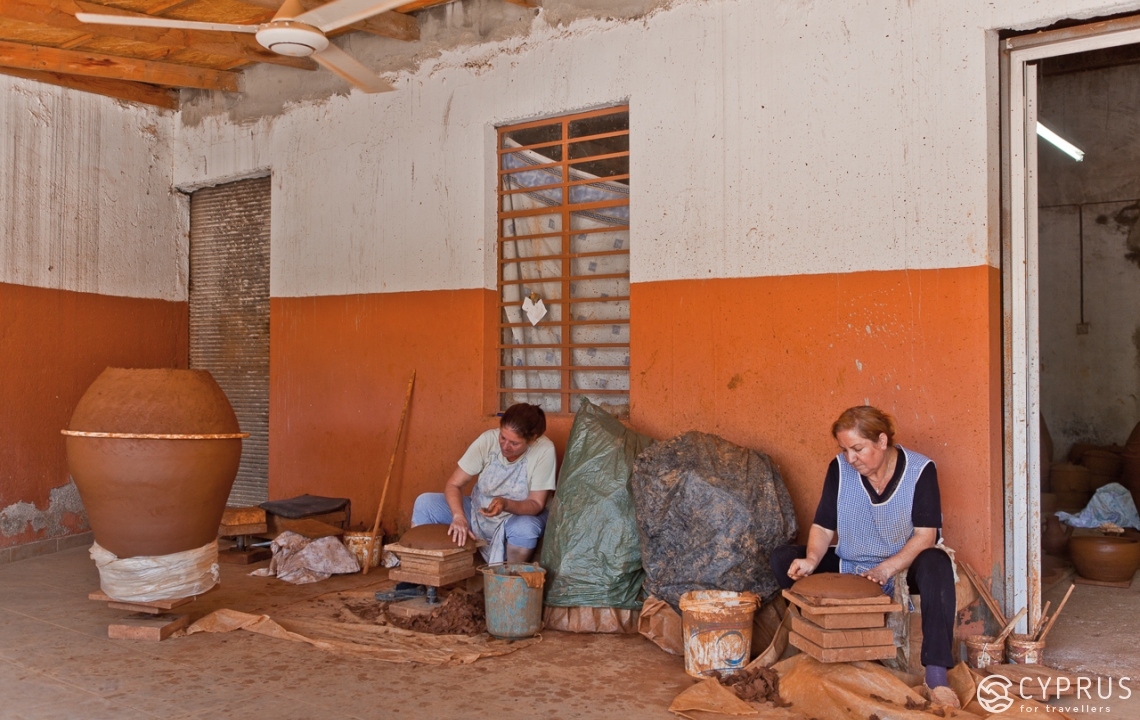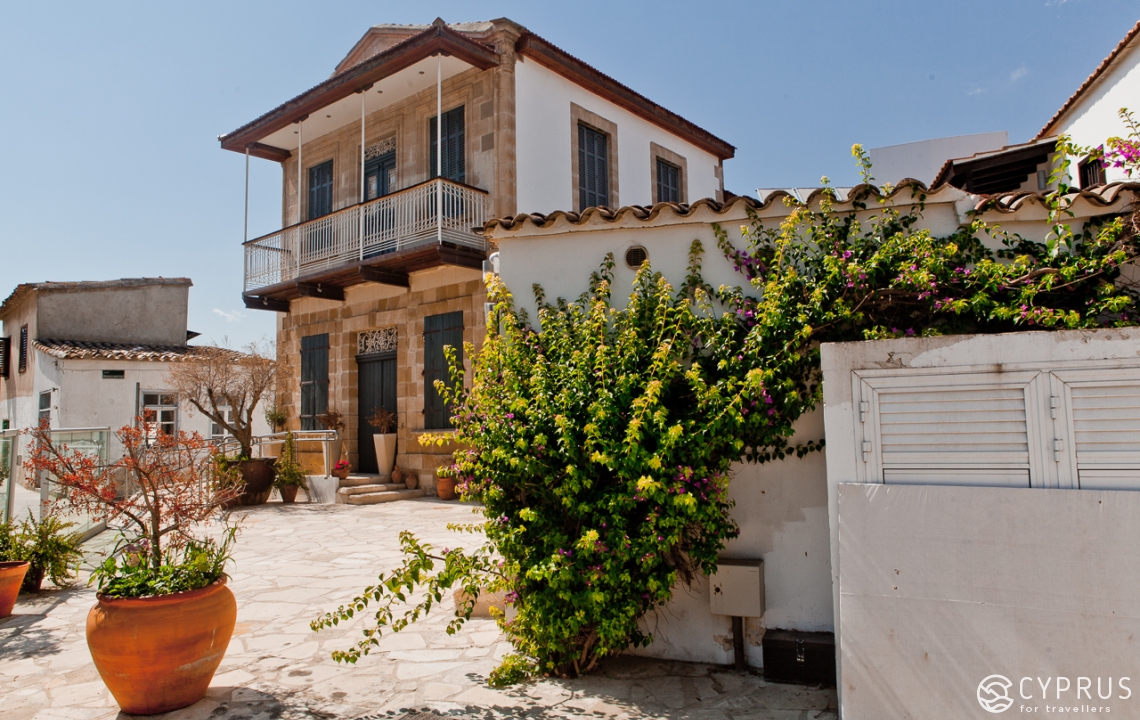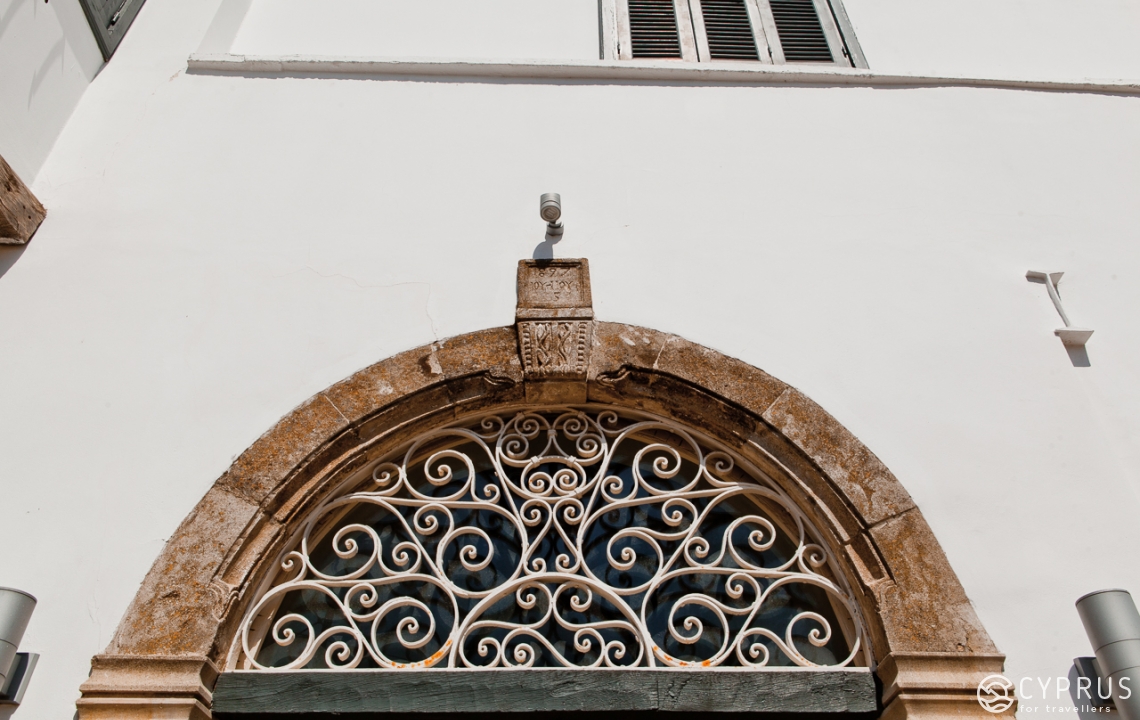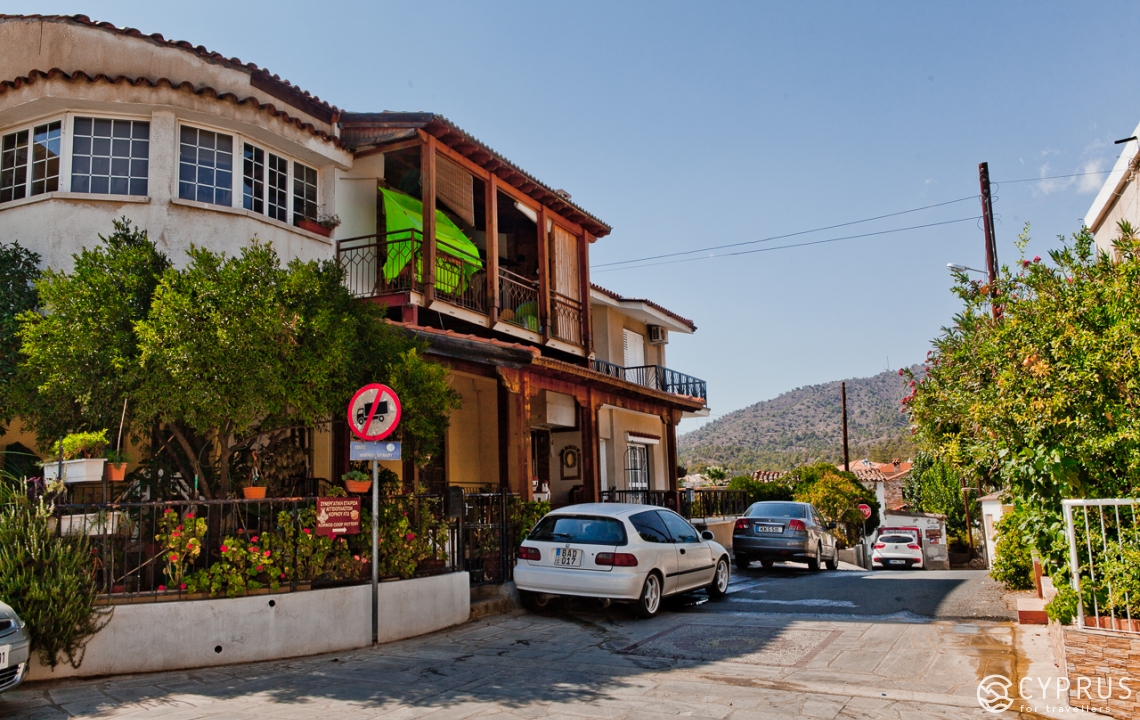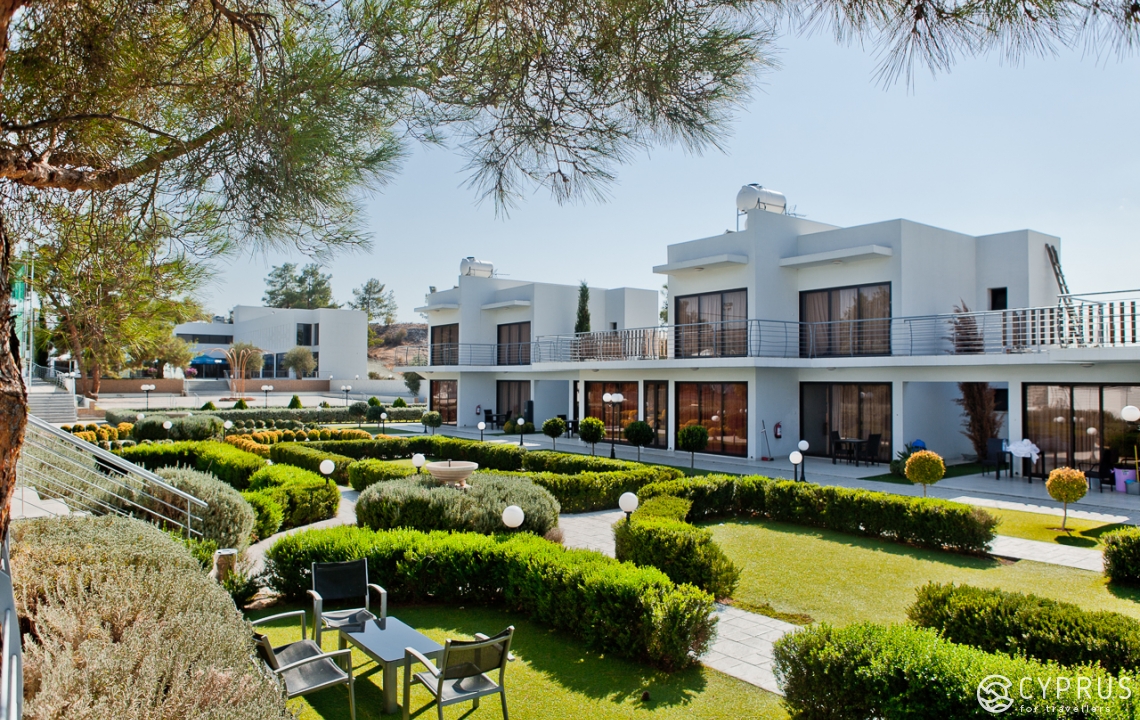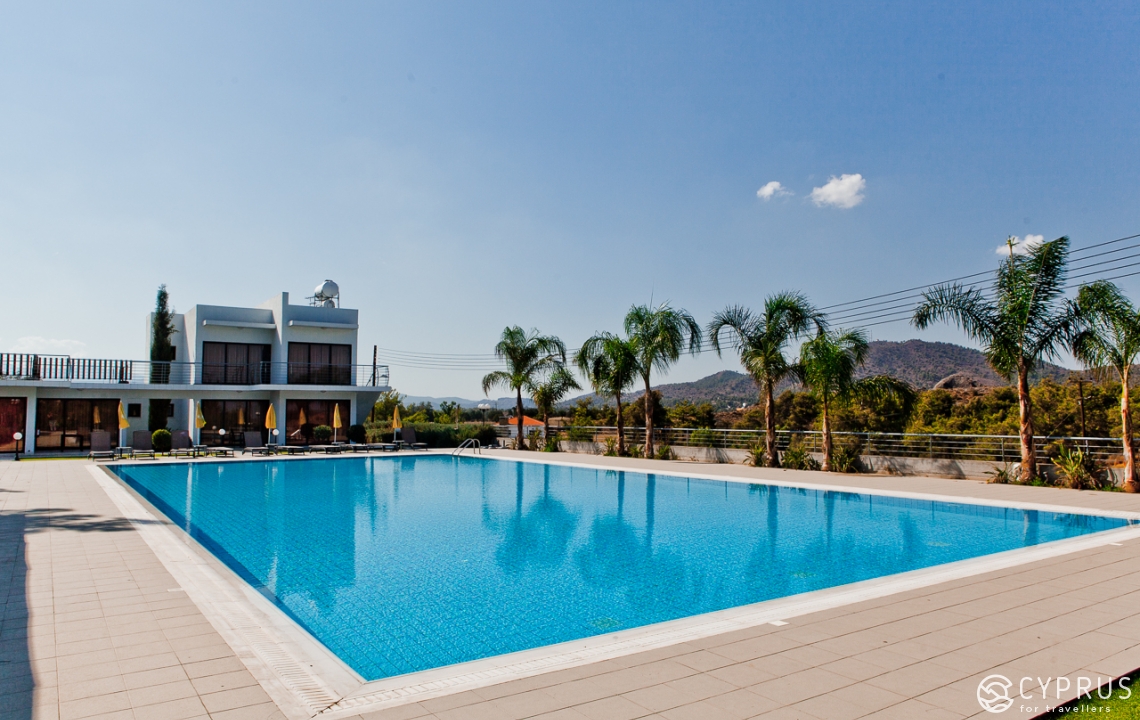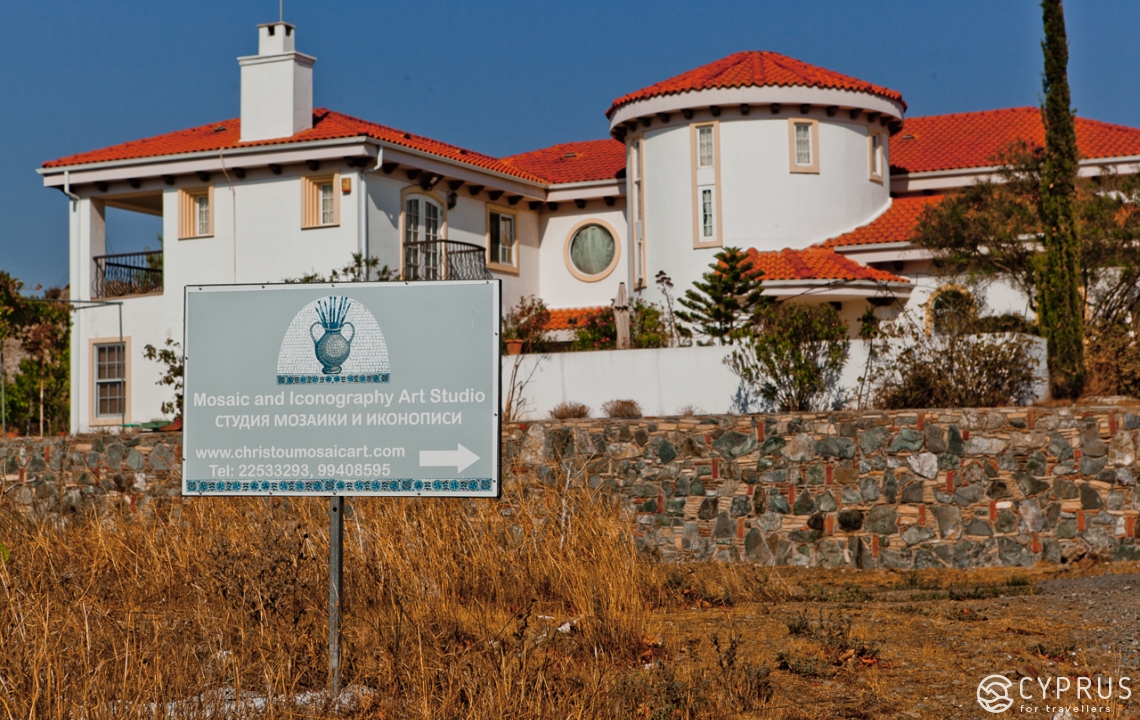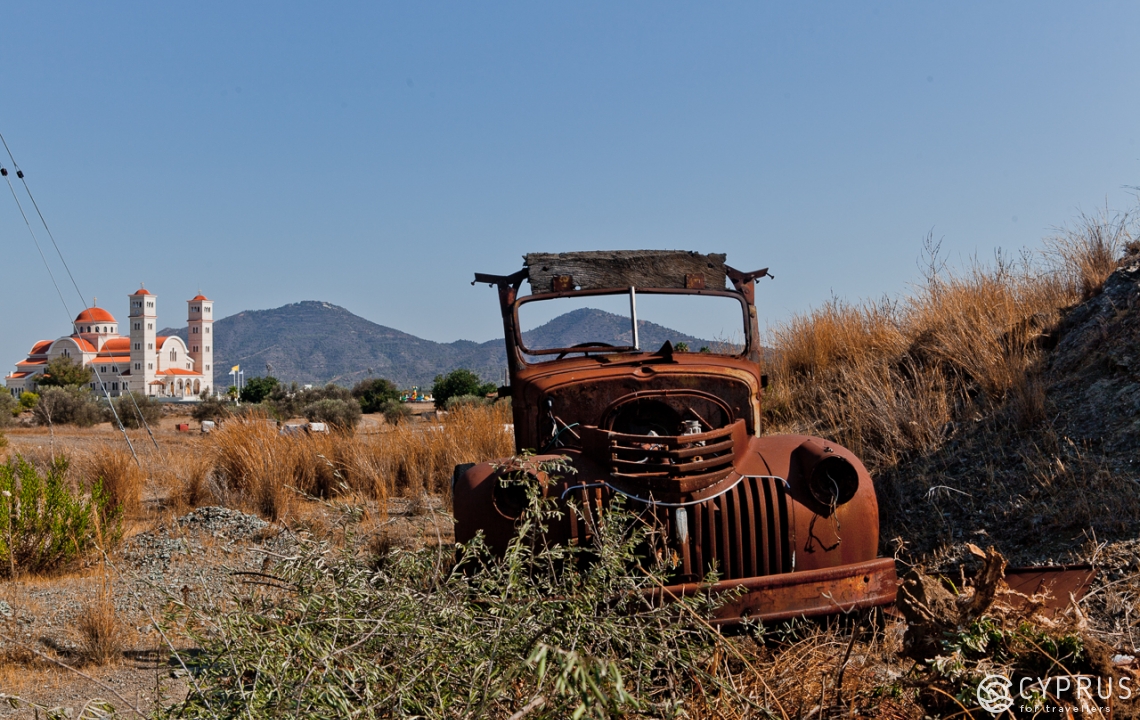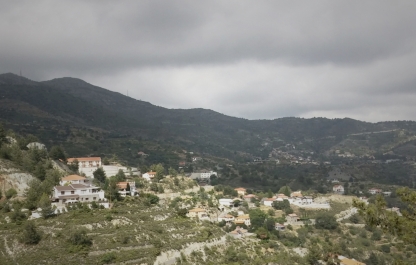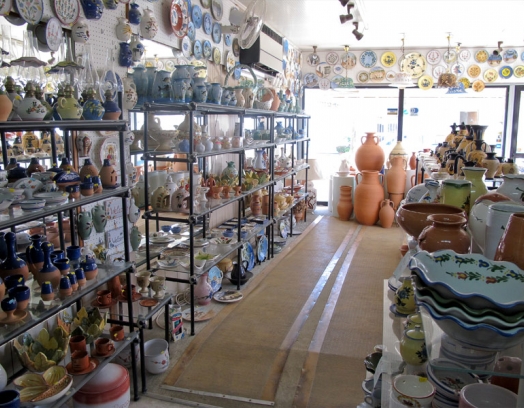We begin our trip in the village of Kornos (located in the Larnaca region, between Nicosia and Limassol) at the foot of the famous Hill of Crosses (“Stavrovouni ”), which is next to the main new church in the outskirts of the village. It is a good spot to survey the surroundings and plan a trip.
We start out by following the signs pointing towards the monastery. Be prepared to cross a kind of safari on your way there: the first thing you’ll notice are the local quarries. If you are “lucky” and there is even a slight hint of wind or there is a truck carrying rocks that’s heading your way, then don’t be surprised to find yourself surrounded by thick, white fog. If you don’t roll up the windows quickly enough, you will likely be stuck coughing for the rest of the day.
After the quarry you will pass by several military bases. Please keep in mind that photography is prohibited here.
Pretty soon the sky and the road clear up and we find ourselves surrounded by scenic hills and beautiful vegetation. There are signs calling on people to “Protect the forest!” The road begins to curve and wind as we drive up the mountain (don’t forget to watch your speed). The views continue to get more and more breathtaking, revealing the island’s natural beauty in full-scale.
A tad bit of history: it is presumed that the monastery was built in the year 327 upon the request of Queen Helena, who disembarked on the island during a seastorm. According to a legend, an angel came to her and said that she should found a monastery as well as several churches on the island and leave a piece of the True Cross, which she had cquired during her pilgrimage to Jerusalem.
Before Helena set foot on the island, the cross belonging to the “Penitent Thief” was claimed to have gone missing. After a long search it was finally spotted soaring above the hill. This is why Helena decided to leave it on the island, allegedly together with a piece of the True Cross and one of the nails that was used to crucify Jesus Christ inside it. The monastery was built on that hill, which came to be known as the “HIll of Crosses” (or Stavrovouni), later in time.
The first written record of Stavrovouni dates back to the so-called Lusignan period in Cyprus (1192–1489 AD). However, there are earlier written documents that confirm the monastery’s existence. One such document is an account by Daniel the Traveler (1106), where the hegumen talks about a cypress crucifix, which was left on the island by Helena.
“The cross hovers in the air without touching the ground for it is held by the Holy Spirit. So I kneeled before it and saw with the eyes of a sinner the grace of God that dwells there. I then explored the island thoroughly”.
In the year 1426 the mamluks stole the cross of the “Penitent thief”. Then several years later it was miraculously returned to its original spot only to be stolen yet again. Its current location is still unknown. The year 1426 also saw the destruction of the monastery by an Egyptian army. Starting from 1571 and until the second half of the 19th century the monastery remained abandoned. However, a handful of hermits continued to inhabit it throughout those years — a fact that surfaces in the memoirs of the Russian monk Vasily Grigorovich-Barsky, who traveled continually in 1723–1747. In 1888 the monastery was almost completely destroyed in a great fire, but was rebuilt afterwards.
Up until the year 1983 there was no electricity or plumbing in Stavrovouni. At first, the monastery relied on rain water, which was collected and stored in reservoirs. With time it acquired a pump and pipes, which connected to an artesian spring.
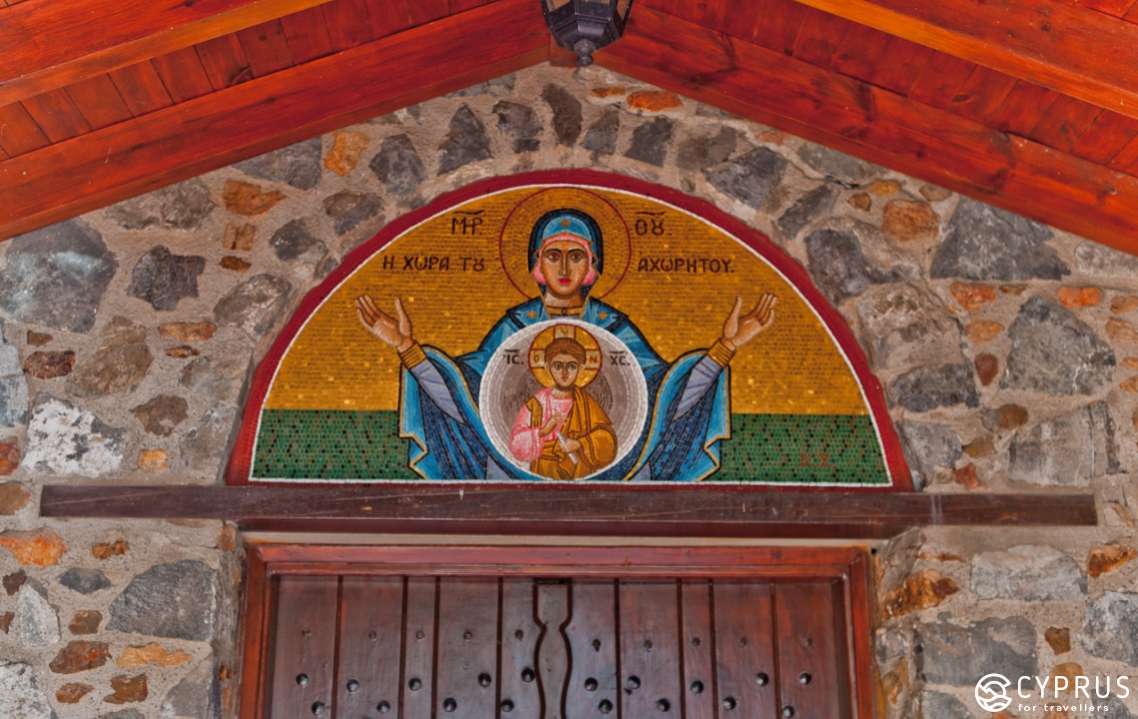
Today the monastery is surrounded by flower and vegetable gardens with greenhouses.
Extensive restoration work brought back the original frescoes that used to decorate the walls of the monastery. Old sea charts often featured an image of the hill, which served as a landmark to the sailors, who could easily spot it from far away. Before the arrival of Queen Helena, the hill was home to a pagan temple. But she ordered a Christian church to be built in its place. The church later became the heart of the monastery.
The only relic which has been preserved down to the present is a silver cross in which a minute piece of the Holy Cross is inserted, the only major reliquary which is still kept in Stavrovouni.
Elder Athanasios has served as the abbot of the monastery since 1982. Thirty monks presently reside in Stavrovouni. The monastery specializes in the production of incense, whose quality has been valued since the ancient times. There are also icon-painting workshops.
The Church and the Monastery
We arrive at the Church of All Saints. There is a place to park your car on the square in front of it. As you enter the church you will notice a memorable sign — a cross carved in stone with an inscription that reads: “This marks the 900-year anniversary of pilgrimage to the Stavrovouni Monastery and the Holy land of Cyprus by hegumen Daniel, who laid the foundation for a spiritual connection between the people of Cyprus and the Kievan Rus [an East Slavic state dominated by the city of Kiev — seen as the beginning of Russia — ed.] From grateful ancestors. 1106–2006”.
There is an image of Virgin Hodegetria hanging above the entrance. Sometimes during certain hours the chapel is closed to the public, but you can always walk around it and enjoy the panoramic view on top of the slope, take photographs and breathe in fresh mountain air. For your convenience there are benches all around the chapel situated in the shade of the trees.
A place such as this makes you sense all the power and glory of history, with its legends, traditions and beliefs. The monastery has been an important destination for great people throughout history and today its monks continue to dedicate themselves to Christian worship and religious asceticism.
We approach the gates of the monastery, which is affiliated with the Metropolis of Kition of the Eastern Orthodox Church. Immediately, you will notice a message to the religious pilgrims, which starts out with a categorical “no to women!”. It is followed by a list of recommendations for men as to how they should dress before entering the monastery (avoid shorts, tank tops and flip flops). Since we are a company of women, our experience at the monastery ends here.
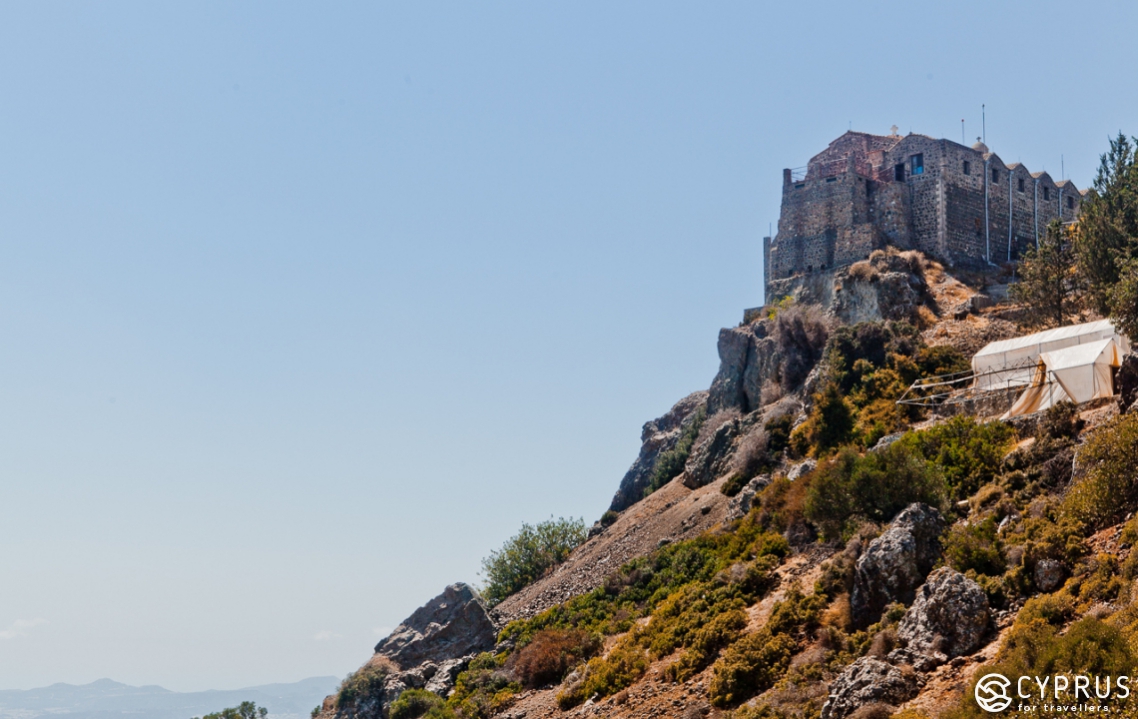
Open: Tuesday, Thursday and Saturday 9:00 - 11:00
It is now time for us to go back. We take the winding road back to the vista point and have one last look at the beautiful views. The vista point is located a few kilometers to the left of the monastery. There is a church dedicated to St. Helena that was built nearby. If you walk a bit further you will see a helicopter pad — a good spot to take a picture if you want to capture yourself standing in front of the mountain with the monastery on top of it. Fans of action movies and adventures will likely think of a scene out of a James Bond film while standing here.
We continue our descent and stop at yet another vista point to admire the view from a different angle. Keep in mind that the use of drones is prohibited here as well as at the monastery.
Getting here from Limassol: take the highway heading to Nicosia. After approximately 40 kilometers exit towards Kornos and continue driving until you hit a turn for Stavrovouni (a big brown sign). Keep going for another 12 kilometers or so.

Kornos: a walk around the village
Today we will find out what awaits a traveler, who decides to visit the old village at the foot of the Hill of Crosses.
Kornos is a village located 27 kilometers outside of Larnaca, at 320 meters above sea level. It takes about the same amount of time (roughly 30 minutes) to get here from Nicosia, Limassol or Larnaca. It is home to approximately three thousand people.
There are three theories behind the origin of its name. According to the first theory, the name comes from the Italian word “corno” meaning “horn” or “protrusion”. The second theory claims that the name is associated with crows (“corones” in the local dialect), which populate the area. In fact, during the Frankish period the village was referred to as “Corno”. But people had settled here a long time ago, even before the arrival of Helena and the founding of the monastery. Remains from the archaic and classical periods were discovered in the northeastern part. The final theory behind the name of the village claims it is associated with “cornus” — a type of local plant.
Today Cornos is recognized as one of the main destinations for pottery lovers. Travel books usually state that beekeeping and agriculture (citrus fruits and olives) have been practiced here since the ancient times.
We decided to walk down the main streets as soon as we get to the village. You can’t miss them since they look as if they have been recently paved and there is fresh paint on the buildings.
We parked our car next to the sign that read “Kornos co-op pottery”. We spotted a whole pile of fresh clay and next to it was a kiln. Women across the street were working on a potter’s wheel. Everything they had made thus far sat under an awning behind them. Being used to the fact that most craftspeople in Cyprus like to advertise and promote their work, we set out looking for a shop that sells ceramics. However, the only thing we found was a note left on one of the two closed shops that read: “For orders call Niki”.

These are the phone numbers: +357 22533395 and +357 99093238.
We kept exploring our surroundings until we ran into a local attraction — the Archontiko Papadopoulou (1897), which is a cultural centre for Cypriot gastronomy, wine and ceramic art. The building, which has been restored and is now under the protection of the government, looks like it once belonged to a wealthy family. We walked around this wonderful white building several times in hopes of finding information on the working hours. But alas the door was tightly locked and an old Christmas wreath hung on the door knob.
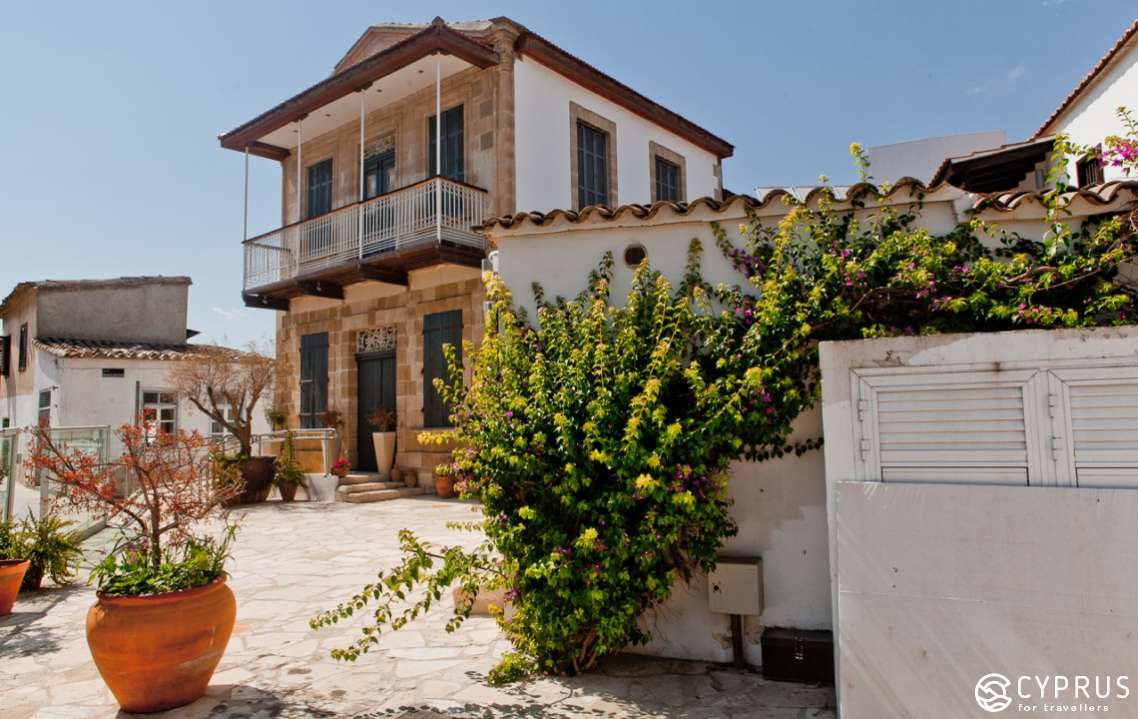
One thing to keep in mind: the only restroom that we came across was next to the museum (and it’s very likely that it was closed). There were no restrooms anywhere else.
Museum address: Makarios III Ave. 67
It was equally difficult to find anyone to talk to or ask for help. People either walked by with determination, or approached and observed us without responding to our appeals for help.
So there was nothing left for us to do but roam around the remaining central streets of the village, which sprawled beautifully across the scenic hills.
When we entered the main old village square located in front of the Church of St. John the Baptist (early 19th century), we realized that we were quite tired and in need of a break. It was a hot afternoon. A group of local men crowded the terrace of a nearby kafenio — by tradition a place for male-only company. Across from the kafenio was a periptero with a small cafe inside. But the owner told us that we were only welcomed there in the evening. Their restroom was also apparently closed.
We started weighing our options. The men sitting on the terrace of a kafenio observed our ordeals with great interest and finally addressed us. They told us there wasn’t a single place where we could eat and rest in Kornos, but if we headed to “Cosmopolis”, it would definitely be open at this hour.
We liked the name of the place and since we had no other options we followed the advice we were given. “Cosmopolis” was located almost at the border of Kornos (Macedonias 19). It was indeed a beautiful place in an idyllic environment, with a large swimming pool, a restaurant and a blooming garden surrounded by hills. The only problem was that we couldn’t find anyone there to talk to either — the place looked empty. Later we learned that “Cosmopolis” was a sort of resort offering relaxing weekend getaways for families with a sports and entertainment program. (www.cosmopoliscy.com)
We took a break relaxing on the terrace of a restaurant and decided to head back. On our way there we stopped by a studio of Constantinos Christou — a Cypriot iconographer and mosaic artist. You can read more about his family and work here.
It was a good bonus to our trip: Constantinos not only paints icons, but also gives lessons in iconography and mosaics.
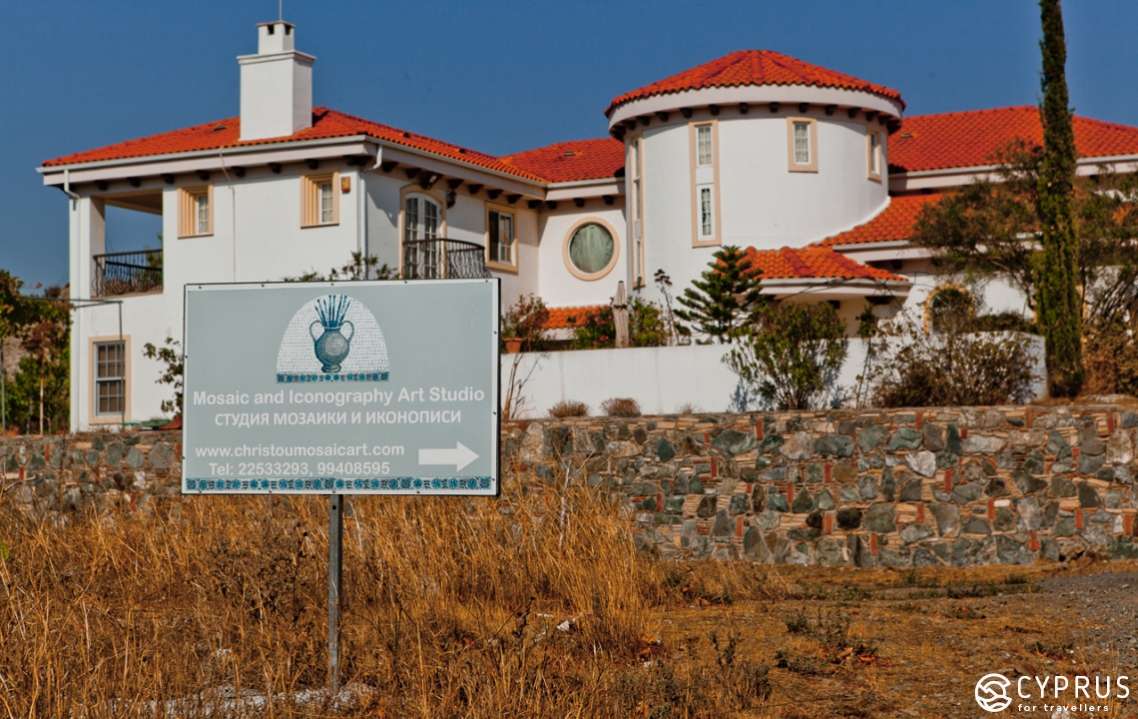
Address: 28 October, 7 (Kornos)
Telephone: +357 99408595
Website: www.christoumosaicart.com
For those who want to explore Kornos on their own, we recommend doing so during its annual festival. It met for the 6th time this year on September 16th. On this day all of the local craftspeople come out to demonstrate their skills and crafts. The Archontiko Papadopoulou most likely also opens its door to the public. The event is held under the aegis of Costas Kadis, the Minister of Education and Culture.
On other days be prepared to have a hard time finding a sandwich and a glass of water here. It is best to grab something before you enter the village at one of the peripteros by the gas station (the peripteros we came across inside the village were closed). We recommend bringing water with you. Also keep in mind that it is equally difficult to find a public bathroom.
A few days after our visit to Kornos I ran into a couple of people who were born in the village. They claimed that there was a pub somewhere in Kornos (not too far from the school). I wish we had known about it when we were there.

For Greek-speaking travelers interested in this region, its history and traditions, we recommend the following book: Κωστα Παπαγεωργιου. ΚΟΡΝΟΣ. Το χωριο του κοκκινου πιλου. Λεωκοσια, 2011
Getting to Kornos: take bus 410 or 455.
Today’s trip was truly full of contrast, but we still look forward to many more such interesting adventures and encounters!
